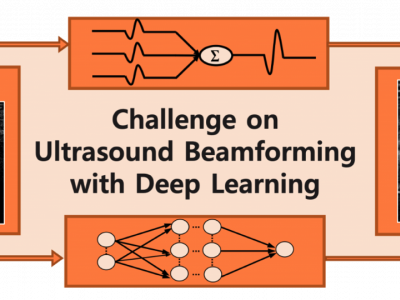Artificial Intelligence

Chinese Hotel Review Dataset
- Categories:
 746 Views
746 ViewsThis dataset was developed at the School of Electrical and Computer Engineering (ECE) at the Georgia Institute of Technology as part of the ongoing activities at the Center for Energy and Geo-Processing (CeGP) at Georgia Tech and KFUPM. LANDMASS stands for “LArge North-Sea Dataset of Migrated Aggregated Seismic Structures”. This dataset was extracted from the North Sea F3 block under the Creative Commons license (CC BY-SA 3.0).
- Categories:
 563 Views
563 Views7200 .csv files, each containing a 10 kHz recording of a 1 ms lasting 100 hz sound, recorded centimeterwise in a 20 cm x 60 cm locating range on a table. 3600 files (3 at each of the 1200 different positions) are without an obstacle between the loudspeaker and the microphone, 3600 RIR recordings are affected by the changes of the object (a book). The OOLA is initially trained offline in batch mode by the first instance of the RIR recordings without the book. Then it learns online in an incremental mode how the RIR changes by the book.
- Categories:
 681 Views
681 ViewsThe dataset contains high-resolution microscopy images and confocal spectra of semiconducting single-wall carbon nanotubes. Carbon nanotubes allow down-scaling of electronic components to the nano-scale. There is initial evidence from Monte Carlo simulations that microscopy images with high digital resolution show energy information in the Bessel wave pattern that is visible in these images. In this dataset, images from Silicon and InGaAs cameras, as well as spectra, give valuable insights into the spectroscopic properties of these single-photon emitters.
- Categories:
 675 Views
675 Views
Collecting and analysing heterogeneous data sources from the Internet of Things (IoT) and Industrial IoT (IIoT) are essential for training and validating the fidelity of cybersecurity applications-based machine learning. However, the analysis of those data sources is still a big challenge for reducing high dimensional space and selecting important features and observations from different data sources.
- Categories:
 12827 Views
12827 ViewsOne of the major research challenges in this field is the unavailability of a comprehensive network based data set which can reflect modern network traffic scenarios, vast varieties of low footprint intrusions and depth structured information about the network traffic. Evaluating network intrusion detection systems research efforts, KDD98, KDDCUP99 and NSLKDD benchmark data sets were generated a decade ago. However, numerous current studies showed that for the current network threat environment, these data sets do not inclusively reflect network traffic and modern low footprint attacks.
- Categories:
 8436 Views
8436 ViewsThe year 2018 was declared as "Turkey Tourism Year" in China. The purpose of this dataset, tourists prefer Turkey to be able to determine. The targeted audience was determined through TripAdvisor. Later, the travel histories of individuals were gathered in four different groups. These are the individuals’ travel histories to Europe (E), World (W) Countries and China (C) City/Province and all (EWC). Then, "One Zero Matrix (OZ)" and "Frequency Matrix (F)" were created for each group. Thus, the number of matrices belonging to four groups increased to eight.
- Categories:
 449 Views
449 ViewsAs one of the research directions at OLIVES Lab @ Georgia Tech, we focus on the robustness of data-driven algorithms under diverse challenging conditions where trained models can possibly be depolyed. To achieve this goal, we introduced a large-sacle (1.M images) object recognition dataset (CURE-OR) which is among the most comprehensive datasets with controlled synthetic challenging conditions. In CURE
- Categories:
 1882 Views
1882 ViewsAs one of the research directions at OLIVES Lab @ Georgia Tech, we focus on the robustness of data-driven algorithms under diverse challenging conditions where trained models can possibly be depolyed. To achieve this goal, we introduced a large-sacle (~1.72M frames) traffic sign detection video dataset (CURE-TSD) which is among the most comprehensive datasets with controlled synthetic challenging conditions. The video sequences in the
- Categories:
 5089 Views
5089 Views






